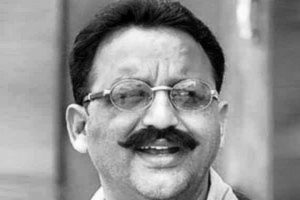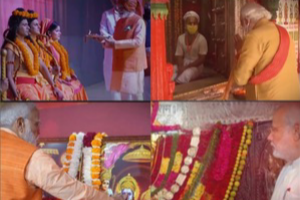Despite the hype doled out by Government spokesmen, the Agnipath scheme provides a sad commentary on both Government finances and the current employment situation; the main justification of Agnipath scheme being its potential to cut the Government’s unsustainable pay and pension bill and the basis of the Agnipath scheme being a belief that a paucity of job opportunities will force the flower of Indian youth to accept four years’ Government employment with limited pay, and uncertain prospects. Briefly, the Agnipath scheme envisages recruitment of soldiers (called Agniveers) for a period of four years, without any pensionary benefits.
On discharge, an Agniveer would receive a sum of Rs 11.71 lakhs, composed of thirty per cent of the Agniveer’s salary contribution, augmented by a matching sum contributed by the Government. Agniveers would have no rank in the army, but on retirement, 25 per cent of Agniveers would be absorbed as regular Jawans. According to the Government, the Agniveer scheme would give the armed forces a much younger profile, since Jawans are currently older, having been recruited for a period of seventeen years. Other benefits would be: (a) a younger reserve that can be called up in national emergencies, and (b) inculcation of discipline in society by demobilised Agniveers.
Examples of countries like Israel, that have a mandatory active-duty conscription for both males and females, are cited in support of the Agnipath scheme. The concept of izzat (honour) has been used as a powerful motivator in the Indian Army; in many families and communities, serving in the army is not merely a profession but a matter of honour. The country’s honour, regiment’s honour, personal honour; all motivate soldiers. Sadly, army veterans see Agniveers as little better than outsourced staff of Government departments. Many young men, in villages of Punjab, Haryana, Rajasthan and Uttar Pradesh, who had prepared diligently for recruitment in the armed forces and were looking forward to a resumption of the recruitment process, after a Corona-induced lull of two years, have felt cheated by the Agnipath scheme.
More disheartened are young men, who had cleared army physical tests, and were waiting for their written tests before the Agnipath scheme was announced. Operationally, Agniveers would struggle to make the cut. Currently, training period for jawans is eighteen months, which would be cut down to six months for Agniveers. Then, almost all fighting formations are homogenous; recruitment being made on the basis of caste and/or area. Agniveers, who would be recruited nationally, would face difficulty in fitting into the existing set-up. In a combat situation, an Agniveer, not having any rank, paid much poorly than his colleagues and constantly worried about his future, may not have the regular soldier’s motivation to fight.
This is not idle imagination; the Indian Army fought and won in Siachen at heights of 20,000 feet, by grit alone ~ without requisite clothing and equipment. This outstanding performance was repeated in Kargil in 1999, where the Pakistani Army controlled all mountain peaks. The Galwan skirmish, when unarmed soldiers willingly laid down their lives, is testimony to the fighting spirit of the Indian Army. Also, there are specialist functions such as handling thermal imagers, battlefield surveillance radars, frequency hopping secure radio sets etc. training in which may not be possible for Agniveers in the limited time available to them. Given the short time frame, psychological and physical maturity necessary for peak performance may elude Agniveers.
Elite formations, like Ghatak Platoons, trained for the most special and challenging tasks, generally comprise soldiers of eight to ten years seniority. The present, when we are engaged in an eyeball-to-eyeball confrontation with the Chinese, may not be an opportune time to try the Agnipath experiment, which may affect our fighting capability adversely. Every economics undergraduate knows that economics is the art of obtaining optimum results from the use of limited resources. The need for the Agnipath scheme arose because our defence budget could not keep pace with our defence requirements.
In fact, our defence spending as a proportion of Central Government expenditure decreased from 16.4 per cent in 2012-13 to 13.3 per cent in the Budget Estimates for 2022-23; in this period, while Government expenditure grew by 10.8 per cent annually, defence spending grew by only 8.6 per cent ~ barely sufficient to offset inflation. As a percentage of GDP, defence expenditure declined from 2.3 to 2 per cent, in the last decade. Significantly, current Chinese defence expenditure is three and a half times that of India. To ensure adequate funds for the armed forces, the Standing Committee on Defence (2018) had recommended that 3 per cent of GDP should be earmarked for defence-related expenditure.
The Standing Committee on Defence (2021) noted that the ratio between revenue expenditure and capital expenditure in case of the army, was 80:20 ~ far short of the ideal ratio of 60:40. The 15th Finance Commission had proposed creation of a non-lapsable fund for modernisation of defence and para-military forces, a measure that was supported by the Standing Committee on Defence (2021) but vetoed by the Finance Ministry.
A decidedly better alternative to garner funds for defence spending, would be to follow the recommendation of the 15th Finance Commission to cut down Central Schemes that gobble up more than Rs 12 lakh crore every year. Agniveers will receive no pension and lesser pay than a regular Army Jawan, that too without Dearness Allowance and canteen facilities. To sweeten the deal handed out to Agniveers, the Government has proposed 10 per cent reservation for Agniveers in Central Armed Police Forces, Indian Coast Guard and the sixteen Defence Public Sector Undertakings.
Similar measures have been announced by some BJP-led States and also by some industrialists. Some units of the BJP have promised to hire retired Agniveers as office guards. However, in light of the experience of exservicemen, who, theoretically, enjoy 10 per cent reservation in Group C posts and 20 per cent reservation in Group D posts in Central government departments, but have an actual representation nearer 1 per cent in Group C and 2.5 per cent in Group D posts, prospective Agniveers should have a Plan B in mind, for their retirement. The many modifications in the Agnipath scheme, within days of its announcement suggest it was prepared in haste and stakeholders were not properly consulted.
The controversy surrounding Agnipath bears a striking resemblance to the controversy generated by the still-born Farming Acts, that had led to similar disturbances. Like the Farming Acts, the Agnipath scheme mostly impacts village dwellers, who provide the bulk of Army recruits. The only lesson that the Government seems to have learnt from its experience with the Farming Acts is that it was ready with a publicity blitz the moment it announced the Agnipath scheme. Presently, oblivious of the danger of politicisation, serving military brass are vociferously defending the Agnipath scheme; Government spokesmen having receded to the background.
Following the deceptive principles of political discourse, a serving Lieutenant General is on record saying that the Kargil Review Committee had suggested a tenure of four years for Jawans; while the actual recommendation was for a tenure of seven to ten years. A serious danger emanating from the Agnipath scheme is that it would release a large number of young battle-trained youth in civilian life. Should such youth fail to secure respectable employment, they may swell the ranks of the many extremist outfits operating in the country, or worse still, become hired guns for fringe groups.
To fully comprehend the dangerous situation a scheme like Agniveer may lead to, one only has to remember the role of ex-service men, driven by religious extremism, during the Punjab militancy of the 1980s. It would appear that the Government has not read the aspirations of its rural constituency correctly. Also, in the final analysis, a scheme like Agniveer that would have a major impact on both army and civilian life needs to have been thought through in greater detail; perhaps Agniveer could have been introduced in a phased manner and appraised periodically rather than being presented as a fait accompli.











